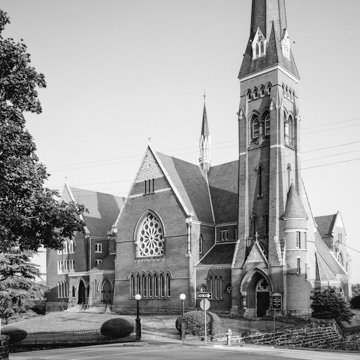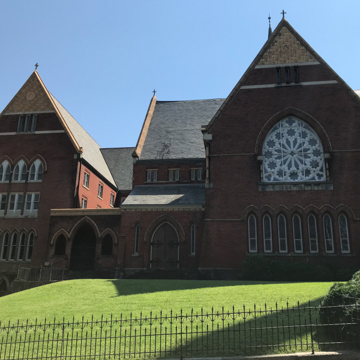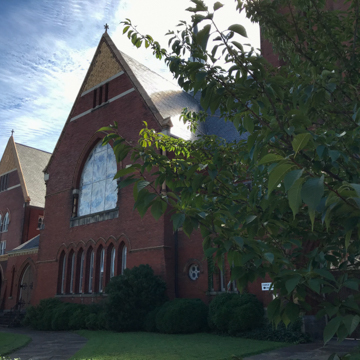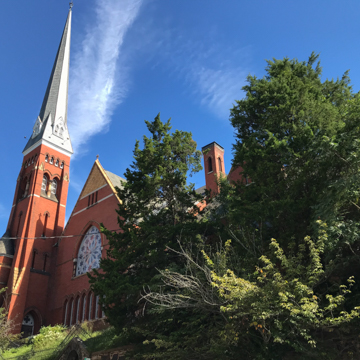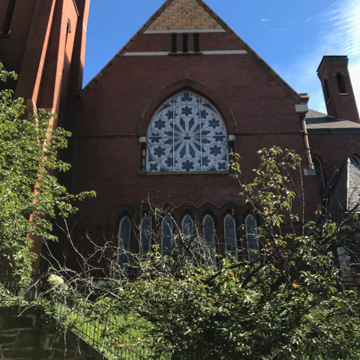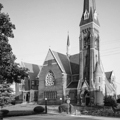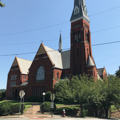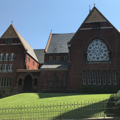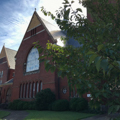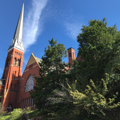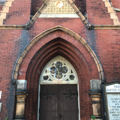One of Virginia's most important examples of High Victorian Gothic architecture provides a dramatic flourish at the southeastern extremity of Courthouse Hill. Designed by a New York City architect in a style that was rather out-of-date, the church is built of hard-pressed brick, vivid red in color, with contrasting yellow-hued stone and terra-cotta trim. The imposing tower, capped with a slate-covered broach spire, rises 180 feet. Over the crossing, a flèche imitates its silhouette on a diminutive scale. Three rose windows filled with stained glass produced in Lynchburg light the auditorium-like sanctuary. The church is a near twin of the First Baptist Church in Danville (1882–1885; PI47). Johnson's Sunday school addition of the 1920s, a brilliant response to the original design, balances the thrust of the tower on the opposite side. Later, Johnson added a recessed chancel with divided choir stalls to the sanctuary.
The June 1993 storm that damaged the spire of the Court Street Baptist Church (BD37) destroyed this taller one, which crashed into the sanctuary below. Lynchburg architect Rhodes designed the copy, which was fabricated in the churchyard and joyfully lifted into place in September 1995.

